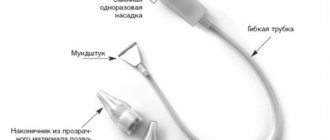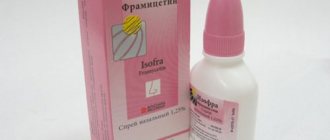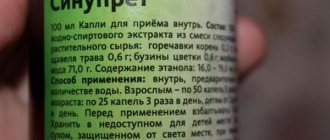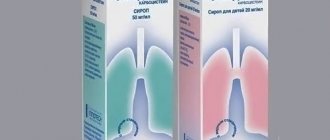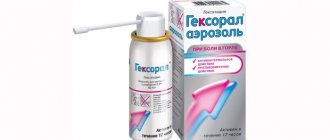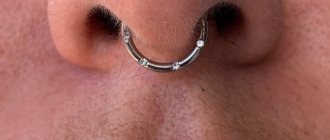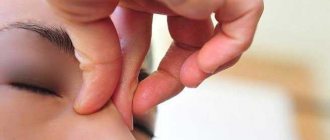General characteristics of the drug
Viferon can be used to treat a child from an early age. It does not contain aggressive chemical components that could cause side effects.
According to sociological studies, 9 out of 10 children regularly suffer from infectious rhinitis. At the same time, the mucous membrane quickly swells, nasal breathing becomes difficult, and the temperature may rise.
The main symptoms for which this remedy should be used:
- there was a sore throat;
- weakness;
- decreased appetite;
- the child began to sleep worse;
- He has become too capricious and shows restlessness.
Interferon is better produced when body temperature rises. Therefore, doctors recommend not lowering the temperature below 38 degrees. Don't stop your body from fighting infection!
It is this temperature that prevents the proliferation of viruses and bacteria and promotes protein synthesis. If the temperature begins to rise higher, the child urgently needs to be given an antipyretic.
The medicine is dispensed in pharmacies without a doctor's prescription. The price of the drug depends on the form of release:
- nasal drops – 58-60 rubles;
- ointment – 60-80 rubles;
- candles – 160-360 rubles;
- gel – 58-160 rubles.
Viferon drops should be stored at a temperature of 2-8 degrees.
What is Viferon ointment used for?
This is a Russian drug that has antiviral and immunomodulatory properties. Application is possible for many different diseases. In Russia, the drug has been officially approved since 1996. In 2015, it was among the twenty best-selling drugs.
Viferon is used to treat the following diseases:
- Acute respiratory infections and flu
- Sexually transmitted diseases, as well as chronic viral hepatitis
- Bronchial asthma
- Infectious lesions of the central nervous system
- Helps eliminate the side effects of antibiotics
Viferon is available as a gel and ointment. In our article we will dwell in detail on ointments for external and local use. The medicine is sold in pharmacies without a prescription. After opening the tube of ointment, the drug can only be used for two weeks. After 14 days, the product ceases to be effective and has a therapeutic and preventive effect.
Release form, composition and pharmacological action
Available in the form of nasal drops or ointment, gel, rectal suppositories. The drugs may contain different amounts of interferon. This affects its cost.
The drops contain:
- interferon;
- water;
- complex of vitamins.
Composition of the ointment:
- interferon;
- cocoa butter, peach;
- petrolatum;
- complex of vitamins.
The drug belongs to the group of immunomodulators. It is based on a substance similar in structure to human interferon. Therefore, it helps fight infection, strengthens the immune system, and relieves inflammation.
The action of Viferon is based on the fact that the drug has a strengthening effect on the immune system. Drops fall on the nasal mucosa and penetrate the body through its cells. It has a stimulating immunomodulatory effect. This is facilitated by interferon, a natural protein that the body synthesizes for its protection.
Viruses absorb it very quickly, so during the development of the disease it is important to support the production of interferon from the outside. Viferon and its analogues cope with this task perfectly.
Composition of various forms of Viferon
Each dosage form of the Viferon series of drugs, together with the “miracle protein” alpha-2 interferon, includes substances that enhance and complement its effect, which also reduce the side effects that these drugs can cause in people suffering from an increased tendency to develop allergic reactions.
Viferon ointment contains vitamin E (tocopherol acetate), the gel additionally contains interferon and vitamin E: citric and benzoic acid, methionine solution (alcoholic) and a powerful immunomodulator - human serum albumin, which creates a specific film on the skin, mucous membranes and tonsils , which significantly increases the effectiveness of this form of Viferon.
The unique pharmaceutical effect of rectal suppositories is explained by their unique, powerful antioxidant interaction of components - the presence of ascorbic acid and vitamin E in the composition.
In addition to the active ingredients (alpha-2 interferon, ascorbic acid and tocopherol acetate), each dosage form contains formative and auxiliary substances that must be carefully studied before using any of the dosage forms of Viferon.
Indications for use and mechanism of action of the drug
Viferon is indicated for the treatment of runny nose caused by aggressive pathogens, including viruses. It is deservedly considered one of the most effective remedies for treating runny nose caused by dangerous pathogens.
Doctors recommend using Viferon as soon as the first symptoms of the disease appear. It is especially effective in the first 2-3 days.
Drops will help to influence the causative agent of the disease in a comprehensive manner. Interferon, which is contained in the drug, penetrates the body through the nasal mucosa and fights the pathogen.
You should not use the drug if the cause of your runny nose is an allergy. It simply will not bring the expected relief.
Viferon drops have contraindications. It is important for parents to remember them. The drug is contraindicated if:
- the child has a sensitivity to a component (or components) of the drug;
- have severe or chronic allergic diseases;
- there are severe pathologies of the liver and kidneys.
To protect an infant from possible risks and complications, drops can only be used as prescribed by a pediatrician. You cannot self-medicate!
Parents should not underestimate the possible hidden danger of even such a seemingly harmless remedy. It is the doctor who will help you correctly determine a safe, yet effective dosage. He will select a treatment regimen and duration of use. This applies not only to treatment, but also to prevention.
It is important for parents to remember that children, especially young ones, are very sensitive to medications. It is necessary to carefully select the daily dose and avoid side effects.
Instructions for use
Before using the drug, you should read the instructions. Main uses:
- Drops can be used already in the first days of a child’s life.
- Up to a year, 1 drop should be instilled into each nostril. The procedure can be repeated up to 5 times per day. A maximum of 5 drops can be instilled per day. This corresponds to 5000 IU.
- From one to three years of age, if your baby has a runny nose, you can put 2 drops in each nostril. The number of repetitions per day is up to 4 times. The daily dose is 8000 IU maximum.
- From 3 to 14 years old, two drops are instilled into each nostril. The procedure is repeated up to 5 times. Maximum – 10000 IU.
- After 14 years of age, adults should take 3 drops. Repeats – up to 6 times. The dose per day is up to 18,000 IU.
After you have applied drops to your child's nose, lightly massage the wings of the nose. Pressing should be as light as possible.
This must be done every time. This technique will help to better distribute the medicine throughout the mucous membrane. This will significantly reduce the likelihood that the child will feel dry.
Just massage for a couple of minutes.
Viferon can be used during seasonal epidemics for prevention. The scheme will be as follows:
- The duration of preventive treatment for colds, ARVI, and flu is from 5 to 7 days. The procedure is repeated twice a day. The number of drops should correspond to the age (according to the scheme indicated above).
- For seasonal morbidity, the drug is instilled in the morning every 24-48 hours. The dosage is appropriate for age.
- If necessary, you can repeat the preventive course.
- The child’s temperature may not be brought down to 38.5 if he does not have serious diseases of the heart, kidneys, liver, or lungs. If there are diseases or convulsions are observed, the temperature is lowered, starting from 38 degrees.
- To cope with a runny nose faster, it is better to alternate Viferon with saline solution . The latter is simply dropped into the nose.
Viferon gel for children with a runny nose
sourceIn this article we will look at the instructions for Viferon nasal drops.
A runny nose is a common problem, especially for young patients. ARVI and colds force people to constantly find optimal ways to solve such difficulties. Among the variety of medications, there are drugs that are among the immunomodulators. It should be noted that most of them are based on a substance that is close to the body in composition - interferon.
One of them is Viferon, which is prescribed to both children and adults for both prevention and treatment of various pathologies of viral origin and diseases characterized by a deficiency of the immune system. In addition, the medication is produced in several forms, making this product even more convenient to use.
Viferon nasal drops are approved for use by children from a very early age. They have a completely safe composition, since the product does not contain substances obtained through chemical synthesis. Rhinitis or runny nose - this disorder can appear due to exposure to various pathogens, including viruses. If nasal discharge is not caused by allergens, Viferon drops become one of the most effective therapeutic agents.
The Viferon series products are designed to strengthen the immune system. In case of a runny nose, the drug works locally. Interferons are natural proteins that are synthesized by the body. They “absorb” viruses, but if there are too many of them, it becomes quite difficult to cope without the help of drugs.
It should be noted that in order for the body to produce interferon naturally, it requires heat, that is, a state of fever.
Infectious runny nose appears quite often in young patients. As the painful condition develops, swelling of the mucous membrane in the nose is noted. For this reason, breathing becomes difficult, and the temperature rises under the influence of the virus. Other symptoms:
- a sore throat;
- weakness;
- disturbance of wakefulness and sleep;
- loss of appetite.
Children also become moody and restless.
Following simple rules for colds is the basis of therapy. However, sometimes additional help with an antiviral effect is needed. It is necessary to create a protective barrier, a special antimicrobial shield that prevents the virus from getting inside and acting in a destructive manner.
For these purposes, it is advisable to use agents based on the above-mentioned interferon. These include Viferon, a domestically produced drug that has an affordable price and is intended for the treatment of children and adults.
It is available in the following forms: gel, ointment, suppositories and drops.
Preparations in the form of gels and ointments are good for lubricating the inner walls of the nose and tonsils for colds. These antiviral agents also treat skin diseases caused by a virus, for example, condylomas, herpes, papulosis, warts, etc.
Gel and ointment are different. The first dries out the mucous membrane, forms a thin barrier film for long-term protection, and is better retained on the mucous membrane. It can be used for babies less than a year old. Ointment is more intended for moisturizing. That is why, before lubricating the nose, you need to choose a form of the drug that is more suitable. If there is strong mucus secretion, a gel is recommended; if the nasal mucosa is dry, it is advisable to use an ointment. Both forms of release should be stored for a year.
It is necessary to understand that bacterial infections with this remedy in adults and children are treated much faster. Which is not surprising, since this drug activates the body’s activity, which, in turn, enhances the work of antibiotics.
Suppositories are prescribed depending on the dosage for the treatment of various infectious inflammatory pathologies. This includes acute respiratory viral infections, influenza, meningitis, pneumonia, hepatitis, and sepsis. They are prescribed to pregnant women for local treatment of genital herpes, mycoplasmosis, papilloma, candidiasis, ureaplasmosis and chlamydia. In addition, suppositories are prescribed to premature and newborn babies. Suppositories must be stored in the refrigerator or a place where the temperature is no more than eight degrees for two years.
Viferon nasal drops are used to treat ENT pathologies: sinusitis, sinusitis and other bacterial and viral diseases. They provide optimal treatment and do not cause addiction in the body, unlike vasoconstrictors.
Nasal drops "Viferon" are an assistant for the body, they increase immunity. The product has the following composition: interferon, vitamin complex, petroleum jelly, cocoa and peach oils, water.
Additional actions that the drug provides (in addition to strengthening the immune system and fighting viruses) are antimicrobial and anti-inflammatory. The use of drops makes it possible to act comprehensively on the problem.
You need to be especially careful with children who have chronic illnesses or disorders of internal organs; they should not be exposed to prolonged exposure to high temperatures.
A sudden decrease in indicators increases the load on the blood vessels and heart. It is for this reason that in the first one to three days after the onset of a runny nose, ARVI or cold, the use of drops is a necessity.
The use of Viferon nasal drops is possible from the first days of a child’s life.
Before the age of one year, you need to instill a drop of the product into each nostril (the procedure is repeated up to five times a day). The maximum dose per day is five drops.
From one to three years, for a runny nose, apply two drops a maximum of four times a day in each nostril.
If the child is from three to fourteen years old, two drops are instilled up to five times a day.
This is confirmed by the instructions for nasal drops for children “Viferon”.
For adolescents over fourteen years of age and adults, it is recommended to instill at least three drops up to six times a day. The medication is used for prevention during possible viral and cold diseases. In this case, the instructions for use will be as follows:
- prevention of ARVI, flu, colds - twice a day (according to age) for at least five days and no longer than a week;
- seasonal incidence - in the morning every 24-48 hours in accordance with age;
- if necessary, the preventive course is repeated;
- when the temperature rises, it can not be reduced to 38.5 degrees.
If there are problems with the lungs, liver, kidneys, heart or convulsions appear, the temperature that needs to be lowered with medication is 38 degrees. Additionally, saline solution is used for a runny nose.
Are Viferon nasal drops always allowed for adults and children?
It must be remembered that the drug has several contraindications for use. The following are noted:
- hypersensitivity to any component of the drug;
- severe liver and kidney diseases;
- allergic diseases of chronic or severe form.
Viferon nasal drops for children should be used very carefully.
If a baby has a runny nose, the medication should be used only after the baby has been examined by a pediatrician. The specialist will write out the exact time of administration, dosage and duration of prevention and treatment.
In addition, you need to be aware of the side effects that may occur if the daily dosage is exceeded.
Viferon drops for children and adults can cause a slight burning sensation and dryness of the nasal mucosa.
The following recommendation for the use of drops allows you to increase the effectiveness of the product and reduce the possibility of side effects: the wings of the nose should be massaged with light pressure after the next instillation in accordance with the amount according to age. This action promotes uniform distribution of the drug in the nasal cavity, so the appearance of dryness is minimized. The duration of the effect on the wings of the nose is two to three minutes.
It is not advisable to use Viferon drops along with other anti-runny nose drops. You need to be especially careful when treating with vasoconstrictors, since these drops themselves provoke dryness of the nasal mucosa. The combination of vasoconstrictors and Viferon can cause damage to the mucous membrane, including the appearance of burns, inflammation and pain.
"Viferon" has the following analogues:
- "Human leukocyte interferon." The liquid form is intended for intranasal administration. The product is demanding in terms of environmental conditions: the storage temperature is maintained from 2 to 8 degrees, the bottle can only be used for three days after opening. You need to take the drug twice a day, five drops in each nostril. The duration of the course depends on the dynamics of the person’s condition, at least 2-3 days. It is taken to prevent illness while there is a threat of infection to the patient.
- "Grippferon". The drug is available in spray and drops. Suitable for use from a very early age. Babies of the first year of life should be instilled five times a day, one drop, children under three years old - 3-4 times a day, two drops, up to 14 years old - two drops five times a day.
These drops are an effective remedy for various symptoms of a runny nose. The drug has a natural composition, without the addition of chemicals and dyes, which is especially appreciated by patients. Compliance with the dosage helps to achieve excellent results in the prevention and treatment of various colds.
Due to its mild effect, parents use drops for treatment from the first days of the baby’s life. The treatment course lasts no longer than a week, and the prophylactic course lasts three days, therefore, during times of high morbidity, reliable and quick protection is provided against the runny nose and other unpleasant symptoms of a cold or ARVI.
Antiviral agents "Viferon", according to patients, are excellent health aides, protect against infectious infection during an epidemic, and increase the functioning of the immune system.
Patients say that from the fourth day from the onset of the disease, interferons are no longer useful for intranasal administration, and there is no point in using them.
We reviewed the instructions for use for Viferon nasal drops.
source
There is probably no child who does not have a runny nose. Despite the fact that mucus is constantly produced in the nasal passages to cleanse the air of harmful substances, every time its production increases, parents begin to panic.
A runny nose in children, or as it is scientifically called, rhinitis, can have different origins. Allergic rhinitis in children is a manifestation of allergies to plant pollen (hay fever), dust, and pet hair. It can occur year-round or seasonally, and is often accompanied by watery eyes and red eyes. The most common infectious rhinitis occurs in children. Viruses and bacteria cause runny noses in children. Viruses are much more common and doctors call this an acute viral respiratory infection. In addition to swelling of the nasal mucosa, which causes difficulty breathing, and copious discharge from the nasal passages, an infectious runny nose in children is accompanied by a rise in temperature and a disturbance in the general condition (weakness, headache, in young children - decreased appetite, sleep disturbance, moodiness, anxiety).
On the nasal mucosa there are many local immune defense factors that capture and digest viruses, but if there are a lot of viruses or the immune system is weakened, then interferons come to the rescue - body proteins aimed at fighting viruses. For the production of interferons, certain conditions are necessary, one of which is fever. Most parents are afraid of a rise in body temperature, considering it a sign of the child’s ill health, forgetting that a rise in temperature is a protective reaction of the body. At the site of inflammation, proteins are produced that act on the thermoregulation center in the brain. As a result, the temperature is transferred to a higher level and the fever is perceived as normal. High temperature prevents bacteria from multiplying, leads to stimulation of interferon synthesis, and forces immune cells to work at the site of inflammation. At temperatures above 39°C, and in children with chronic pathology at lower temperatures, the condition may worsen due to increased fluid loss and oxygen consumption, which negatively affects the functioning of the lungs and heart.
Adverse reactions and overdose
Adverse reactions are extremely rare. Most often they are observed with an overdose or hypersensitivity of the patient. Viferon (drops) can provoke:
- slight burning sensation of the mucous membrane;
- overdrying of the mucous membrane.
To avoid side effects, do not use Viferon simultaneously with other nasal drops. Those drops that constrict blood vessels especially dry out the mucous membranes. In this case, you need to be careful not to exceed the dosage, and ensure that there are long breaks between the use of drugs.
Sometimes an uncontrolled combination of drops into the nose can lead to severe burning, pain and even burns of the mucous membrane.
In case of an overdose of the drug, the general condition of the child should be carefully monitored. Since the drug contains only interferon, its overdose is not so dangerous. To avoid it, you need to carefully study the instructions and recommended doses. If the child's condition worsens, he should be shown to a doctor.
Pros and cons of the drug
Like any medicine, Viferon has its positive and negative sides. The advantages of the drug are obvious:
- it strengthens the immune system;
- relieves swelling;
- fights infection.
Most pediatricians agree that Viferon is effective and safe for the treatment of infectious rhinitis in children from birth. The medicine contains no dyes, it is natural, and has a very gentle effect. The main thing is to adhere to the recommended dose in accordance with the child’s age.
A relative disadvantage is that for the therapeutic effect to occur, it will take several days of using the product.
Suppositories for children
Viferon suppositories for runny nose in children are used rectally. This means that the active components enter the systemic circulation through the rectum. Due to this, this substance has a general effect on the body, which requires the correct determination of the amount of the active component - interferon.
The dosage of Viferon suppositories for children should be prescribed by a doctor. There are several types of the drug depending on the volume of the active component:
- Viferon 1 suppositories – include 150,000 IU of interferon;
- Viferon 2 suppositories – the content of the active substance is 500,000 IU;
- Viferon 3 suppositories – include 1 million IU;
- Viferon 4 suppositories – contain 3 million IU.
Viferon suppositories for a runny nose in a baby are used with the smallest amount of active ingredient. They can be used literally from the first day of life to 1 year. Children aged 1-7 years are prescribed the second category of the drug. A product containing 1 million IU is suitable for children aged 7-12 years. Viferon for adults and adolescents should contain the maximum amount of the active ingredient.
The dosage of Viferon for a child is chosen exclusively by the doctor.
Viferon for colds should be used in accordance with the doctor's prescription and instructions. When choosing a medicinal substance, it is necessary to take into account the age of the baby . It is strictly forbidden to use suppositories of a higher dosage than allowed for the treatment of an infant.
It should also be borne in mind that a drug containing 150,000 IU is unlikely to give the desired result if you try to replace drug 2 or 3 with it.
As a rule, the course of therapy is 5 days. If the need arises, it is repeated again after 5 days. The duration of treatment depends on the complexity of the pathology. Sometimes the method of using Viferon requires an extended course, which can range from 10 days to 2 months.
Viral infections and hepatitis are treated within 5 days; it may take 5-10 days to eliminate enterovirus infection or herpes. If sepsis or mycoplasmosis develops, it takes 10-15 days. If bacterial pneumonia develops, the drug is usually used for 1 week.
Opinions about the drug
Reviews about Viferon drops are mostly positive from both pediatricians and parents:
I prescribe Viferon even to newborns. If the recommended dosage is followed, the drug causes virtually no side effects. In 2-3 days it relieves swelling of the mucous membrane. I believe that it can quickly strengthen the immune system. I often recommend it for prevention.
Alexey, 33 years old, pediatrician
The doctor prescribed Viferon to my three-month-old daughter Sonya. She had a severe runny nose, swelling, and a temperature of 37.8. I gave it a drop in each nostril three times a day. After just two days I noticed that there was less discharge. My daughter began to sleep better and be less capricious. Good and safe medicine. I think that they can also be used for prevention.
Lisa, 27 years old
My son is 3 and a half years old. We recently started attending kindergarten. Soon they fell ill with ARVI. The pediatrician advised me to fight a runny nose with Viferon drops. Three days later the baby felt better. The nose breathes better, my son has stopped rubbing it. I think this is due to the drops. The main thing is not to exceed the safe dosage. That's what the doctor told us. I will also use the drug for prevention. I really want the baby to get sick less.
Yulia, 37 years old
Advantages and disadvantages
The advantages of the drug are obvious:
- it strengthens the immune system;
- relieves swelling;
- fights infection.
Most pediatricians agree that Viferon is effective and safe for the treatment of infectious rhinitis in children from birth. The medicine contains no dyes, it is natural, and has a very gentle effect. The main thing is to adhere to the recommended dose in accordance with the child’s age.
A relative disadvantage is that for the therapeutic effect to occur, it will take several days of using the product.
Help needed
In addition to symptomatic treatment, runny nose in children requires antiviral and/or antibacterial (in the presence of bacterial flora) and other therapy, depending on the cause of the runny nose. It is advisable to start therapy aimed at viruses from the first minutes of the disease, when they are actively multiplying. Interferon preparations are widely used in the treatment of ARVI. They come in different forms, some may cause negative reactions. It has been established that when using the drug Viferon there are no side effects that occur with parenteral administration of interferon alfa-2b drugs. In addition, Viferon Suppositories contain a protein compound (alpha-2b interferon) that is completely identical to natural. In addition, the antiviral activity of the main active ingredient is enhanced by a complex of antioxidants (vitamins E and C). Ascorbic acid and alpha-tocopherol acetate, being highly active antioxidants, have anti-inflammatory, membrane stabilizing, and regenerating properties.
Most parents wonder how to treat young children with colds. After all, many medications in this case can seriously harm the child. The choice of immunomodulatory agents that are approved for use in children is quite limited. One of the most effective and safe medications is Viferon suppositories for children. They perfectly eliminate cold symptoms, strengthen the immune system and improve the condition of the little patient’s body.
The drug can be used from the moment the child is born
Analogues of the drug
In addition to Viferon, there are other medications that can relieve inflammation of the mucous membrane.
These include:
- Anaferon. Available in tablet form. The action is the same - it stimulates the production of immune cells and fights infection. Can be used for prevention.
- Giaferon . Available as rectal or vaginal suppositories. Contains interferon Alpha. Fights viruses, bacteria, stimulates the immune system.
- Laferobion. Available in spray or powder form for suspension. The powder can be diluted with ordinary boiled water (1.5-2 ml). The child is instilled into each nostril 1-2 drops 3-4 times a day. The drug stimulates the immune response and fights infection.
